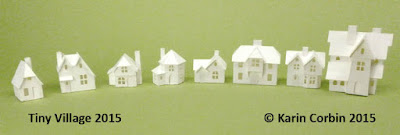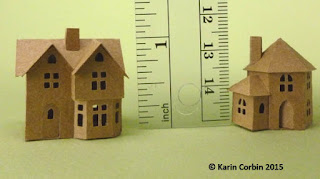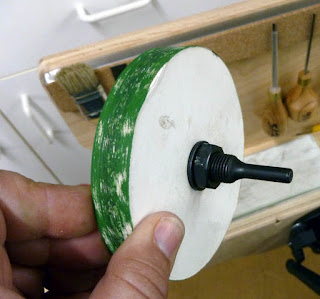I am one of "those" people who sharpen their #11 knife blades. In fact I sharpen them before I use them. Those blade edges feel rough to me when they are new as I am so used to how they feel when beautifully sharpened. No I am not one of those crazed people who loves the physical process of honing tools. Instead I have a quick and easy method that takes less than a minute to get the job done. My sharpening tool is very portable as it is the size of a credit card. So if you are heading off to a class or club meeting it will tuck right into your traveling tool bag.
My sharpening system:
One Xtra fine, 1200 mesh diamond coated piece of credit card sized steel. I bought mine at Rockler (see photo below). But sometimes I see them in hardware and sporting goods stores. You must have the Xtra fine grit.
Remove the label from the back of the card and
on that back side adhere a piece of 3200 Micro-mesh abrasive paper also purchased from Rockler. Another source for this kind of micro grit is for polishing out scratches in acrylic (perspex) windshields.
I use 3M carpet tape for the adhesive for the micro mesh abrasive paper as it is wide enough to cover the steel surface without having a seam but you could also use a spray adhesive. No lumps on the surface under the paper allowed. This is VERY important as you must have an absolutely flat surface to hone the knife properly. The sharpening card will likely come with a sticker on the backside and you will need to remove that sticker and any adhesive left from the sticker. One reason this sharpening system works better than regular sharpening stones or leather strops is because the surfaces of this stainless steel card are very flat and they will stay that way.
Method: a drop or so of water on the diamond side. Holding the knife so the beveled edge of the knife is flat to the surface of the diamond card and give it 10 strokes or so per side of the blade. Next turn the card over to the micro mesh side, drop of water for lubrication and another 10 or so strokes to polish the blade edge. I get asked which direction to push or pull the blade. After experimentation my conclusion is it does not make a lot of difference. I find I am often using and short stroke back and forth motion rather than focusing on going only in one direction. That is likely something I began doing because the blade that has such a short length. I also get asked what is the angle of degree you hold the blade at. Only one answer, I have no idea what angle they set the blade grind to be. I just match the angle the blade was ground at to place it flat against the surface. You can become sensitive to feeling it flat against the surface. Its just a matter of practice rather like learning to eat with a fork when you were a toddler. Our brains will develop the sense of what is right within a short time and memorize the angle to hold it at, then you won't even have to think about it, you will just do it.
Because the #11 knife blade is so short I am really only working along the edges of the card. But if you are sharpening the flat chisel type craft blades #17, 18, etc. you can do those in the center of the card as your knife handle won't get in the way.
You can wash your card with soap and water if the grit starts to get filled up with metal that you have honed off the blade. No solvents please as they will destroy the micro mesh paper.
Unless the blade breaks you can use the same knife blade for ages and always keep it scary sharp, even sharper than when it was new out of the package :) Some people actually like using blades with broken tips if they don't need the tiny point for cuts so there you go, no waste at all.
Now that my accidental knife point prick in my thumb has healed over while I wrote this posting I can get back to doing the tutorials for the Old Town project.
http://www.rockler.com/ to purchase the extra fine diamond coated steel card and the micro mesh abrasion material to adhere to the backside of the card.
© Karin Corbin 2014, all reproduction right reserved















































